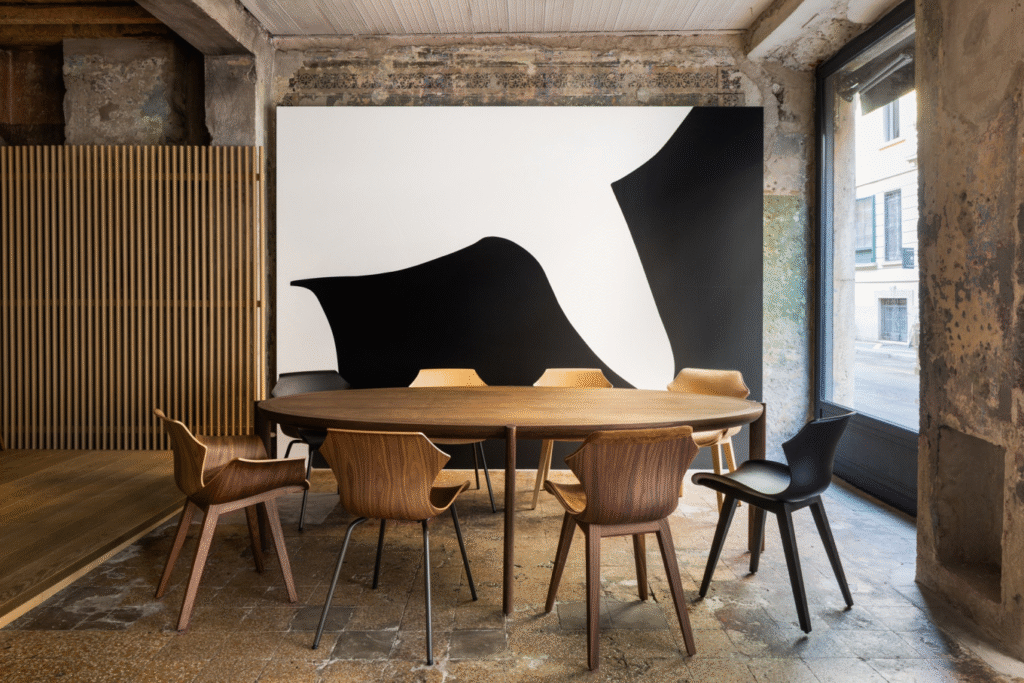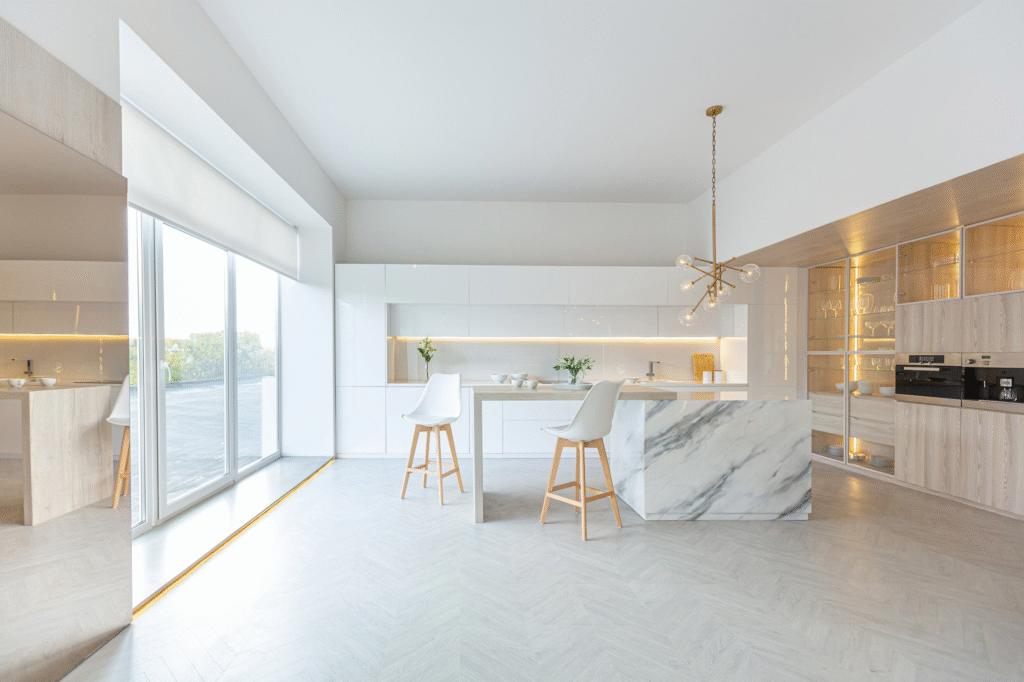Minimalist Movements, In an age of relentless consumption, cluttered spaces, and overstimulating visuals, a quiet rebellion has emerged—a movement that seeks clarity, focus, and beauty in simplicity. This is minimalism: the art of doing more with less.
Minimalism is not merely an aesthetic choice; it’s a philosophy, a lifestyle, and an approach to design and art that has shaped architecture, fashion, interiors, and even how we live and think.
This article explores the roots of minimalist movements, their cultural impact, and how the idea of “less is more” continues to inspire creativity and innovation.
1. What is Minimalism?
Minimalism is both simple and complex to define. At its core, it’s the intentional removal of excess to focus on what truly matters—whether in design, art, or daily life.
- In design and architecture, minimalism favors clean lines, open spaces, and a restrained palette.
- In art, it emphasizes reduction, stripping away ornamentation to reveal the essence.
- In life, it’s about choosing less—less clutter, less distraction—to gain more clarity, meaning, and freedom.
The guiding idea: when you take away the unnecessary, what remains becomes powerful.
2. Origins of Minimalist Movements

Minimalism didn’t emerge in a vacuum—it evolved over centuries, influenced by culture, philosophy, and shifting needs.
- Eastern Influence: Zen and Simplicity
Japanese aesthetics like Zen Buddhism and the concept of Ma (negative space) deeply shaped minimalism. Traditional tea houses, rock gardens, and calligraphy emphasized restraint, balance, and the beauty of emptiness. - Modernist Foundations
In the early 20th century, architects like Ludwig Mies van der Rohe and Le Corbusier embraced functional, stripped-down design. Mies’s famous phrase, “Less is more,” became the minimalist mantra. - Post-War Minimalist Art
In the 1960s, artists like Donald Judd and Agnes Martin led the Minimal Art movement, rejecting expressive excess and focusing on pure form, color, and material.
These streams—Eastern philosophy, Modernist design, and Minimalist art—converged into a global movement.
3. Minimalism in Architecture and Design
Minimalism in architecture is perhaps its most visible and influential form.
- Clean Lines and Open Spaces
Minimalist buildings avoid unnecessary ornamentation. Instead, they focus on geometry, proportion, and light. - Material Honesty
Wood, concrete, glass, and steel are used in their pure forms. A minimalist building doesn’t try to disguise its materials; it celebrates them. - Integration with Environment
Minimalist design often blurs boundaries between indoors and outdoors, inviting nature, air, and light into the space. - Function as Beauty
Every element serves a purpose—there’s no clutter, no fillers. Beauty emerges from clarity and intention.
From sleek urban apartments to serene rural retreats, minimalist architecture is about living with only what you need—and loving what you have.
4. Minimalism in Art: The Power of Restraint
Minimalist art challenged traditional notions of what art “should” be.
- Rejecting Complexity
Minimalist artists moved away from detailed, representational art. Instead, they created monochrome canvases, geometric sculptures, and repetitive patterns. - Focus on the Essentials
A single line, a square, or a shade of white became the subject. Minimalist art asks viewers to slow down and notice subtleties. - Space as Part of the Art
Many minimalist works rely on empty space to create impact, proving that what’s absent can be as meaningful as what’s present.
This art wasn’t about “less effort”—it was about more intention.
5. Minimalism as a Lifestyle
Beyond design and art, minimalism has become a way of living.
- Decluttering and Simplifying
Many embrace minimalism by owning fewer things—keeping only what’s useful, meaningful, or beautiful. - Digital Minimalism
As screens dominate our lives, some people simplify their digital worlds—less scrolling, more focus. - Intentional Living
Minimalism encourages questioning every choice: “Do I really need this?” The goal isn’t deprivation—it’s freedom from excess.
This lifestyle movement has resonated worldwide, as people seek clarity in a noisy, crowded world.
6. Why Minimalism Matters Today
Minimalism is more than a design trend—it’s a response to modern challenges.
- Information Overload
In a world of constant notifications and visual clutter, minimalism offers mental breathing room. - Environmental Awareness
Consuming less means wasting less—minimalism aligns with sustainability. - Cultural Shift Toward Mindfulness
As mindfulness and wellness grow, minimalism supports slower, more intentional living.
Minimalism isn’t about cold emptiness—it’s about making space for meaning.
7. The Criticism and Misconceptions of Minimalism
Minimalism isn’t without debate.
- “Minimalism is only for the wealthy.”
Critics argue that minimalist design (think white lofts and designer furniture) can be elitist. But true minimalism isn’t about buying expensive “minimalist” items—it’s about choosing thoughtfully and living simply. - “Minimalism is sterile and boring.”
Minimalism doesn’t mean lifeless. A well-designed minimalist space feels calm and alive, not cold. - “Minimalism means owning nothing.”
Minimalism isn’t about deprivation—it’s about intentionality. You can love books, art, or collections and still live minimally if you keep only what adds value.
Understanding minimalism requires seeing past the clichés—it’s a philosophy, not just an aesthetic.
8. The Future of Minimalism

Minimalism continues to evolve.
- Hybrid Minimalism
Many designers now blend minimalism with warmth, texture, and color, creating spaces that are simple but inviting. - Global Influence
Cultures continue to share ideas—Scandinavian “hygge,” Japanese “Zen,” and tropical minimalism are cross-pollinating. - Minimalism and Technology
Smart homes and digital tools may help us live with less physical clutter—but raise new questions about digital excess.
The future of minimalism may not be stark white walls—it may be rich simplicity, warmth, and conscious design.
Also Read: The Living Canvas: Integrating Nature In Architectural Design
Conclusion
Minimalism is more than a look—it’s a way of seeing. Whether it’s a simple tea house, a sleek skyscraper, a monochrome painting, or a life with fewer possessions, minimalism asks: What truly matters?
By stripping away the unnecessary, we reveal the essential. And in that space, we find clarity, beauty, and meaning.
FAQs
1. What is the main idea behind minimalism?
Minimalism is about removing excess—in design, art, or life—to focus on what truly matters.
2. Who started the minimalist movement?
Minimalism grew from Japanese Zen aesthetics, early 20th-century Modernist architects, and 1960s Minimalist artists.
3. Is minimalism just about owning fewer things?
No. Minimalism is about intentional choices—owning and doing what adds value, rather than accumulating by default.
4. Why is minimalism popular today?
In a world of overconsumption and digital overload, minimalism offers calm, clarity, and sustainability.
5. Can minimalism work in small spaces?
Yes—minimalism often thrives in small spaces, turning them into functional, uncluttered, and beautiful environments.
6. Is minimalism only an aesthetic?
No—it’s a philosophy that influences art, design, lifestyle, and even how we think about time and priorities.
7. Will minimalism last or is it just a trend?
Minimalism has ancient roots and continues to evolve—it’s not a fad, but a timeless principle of thoughtful simplicity.